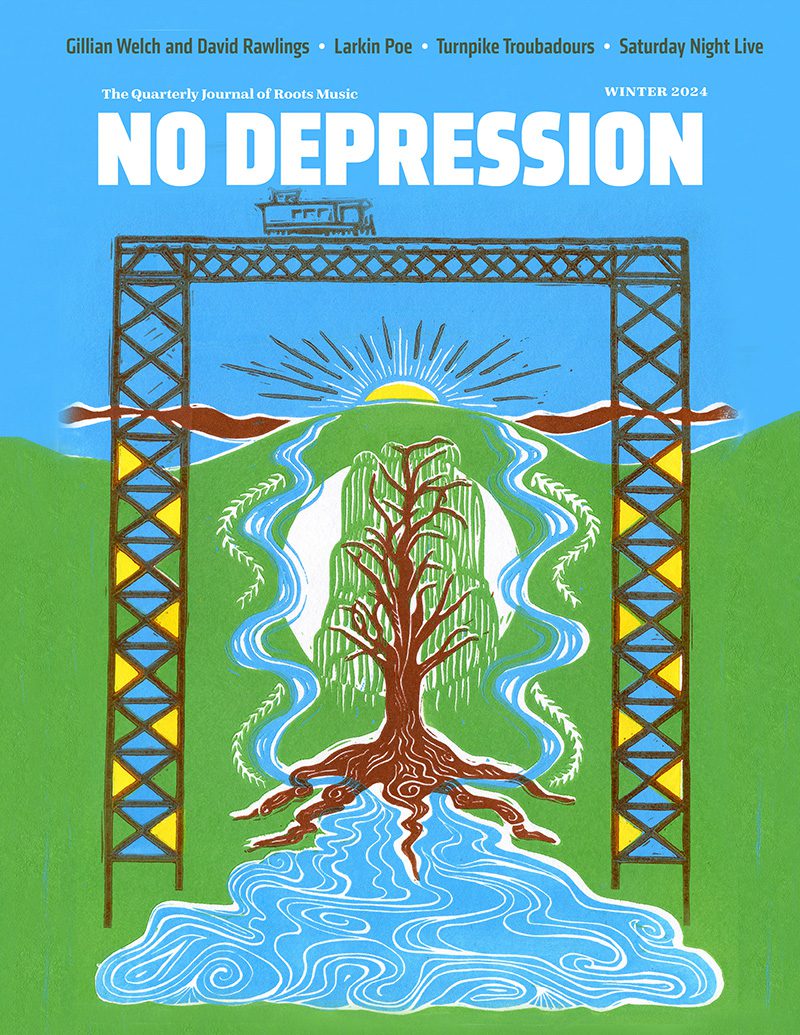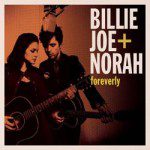Bob Dylan and a Full Moon: In Concert at the Orange County Fair-July 15th, 2011
By Ross Altman
In memory of Joel Okida, fellow FolkWorks writer
(courtesy of FolkWorks)
Driving through Carmageddon to get to Bob Dylan’s sold-out opening night concert at the Pacific Amphitheatre in Costa Mesa at the Orange County Fair I finally found out what the problem was:
They got Charles Darwin trapped out on Highway 5
The judge says to the High Sheriff, ‘I want him dead or alive
Either one, I don’t care’
High water everywhere.
(High Water Everywhere (for Charlie Patton))
Whatever crossed my wandering mind, Bob had it covered. But it wasn’t always immediately clear: At the end of the hour and forty-five minute concert a woman in front of me asked, “What was that song just before All Along the Watchtower?” I looked her in the eye and replied, “Like a Rolling Stone.”
She had been to five or six Dylan shows in the past few years and counted herself a real fan. So it wasn’t her ignorance or innocence showing; it was Dylan’s well-known penchant for rearranging his old songs just past the point of recognition. No matter; that was half the fun of hearing them again—to guess what song you were in the middle of before it passed you by, like catching a fast train before it left the station.
Dylan was the engineer, and the train was the most extraordinary body of songs ever written by an American—with stops along every gravel road and twisting highway and raging Southern river in a landscape he has been exploring for the past half century. What a glorious journey he took us on—under a full moon at the kickoff concert for the Orange County Fair’s Pacific Amphitheatre summer concert series.
When Bob growled, “I’ve sucked the milk out of a thousand cows,” he might have missed a few; they were standing just a short walk away, in the animal husbandry exhibits at the County Fair—both Holsteins and Anguses. They were all lovely to look at, but one in particular captured my fancy, just an hour before show-time: she opened up her mouth wide and let out a glorious “Moo…!” Well, I told her, “Yours is the second greatest voice I’m going to hear tonight.”
Dylan had a song for the whole barnyard:
I got a house on a hill, I got hogs all out in the mud
I got a house on a hill, I got hogs out lying in the mud
Got a long-haired woman, she got royal Indian blood
(Summer Days);
but the glorious sow I saw out in the pen, watching me as the sun was going down, had nothing but a grunt of protest for another song of Dylan’s:
I got the porkchops, she got the pie
She ain’t no angel and neither am I
and added this as an afterthought:
Shame on your greed, shame on your wicked schemes/
I’ll say this, I don’t give a damn about your dreams.
(Thunder On the Mountain)
The man who was introduced as “the voice of the promise of the 1960s counterculture” rolled into town just ten days after the man who gave it that name, social critic Theodore Roszak, author of The Making of a Counter Culture, passed away. It was a vivid reminder of the links on the chain of modern history to have him welcomed with open arms into the conservative bastion of California, and hear more than five generations of fans cheering his old protest songs like Highway 61, A Hard Rain’s a’ Gonna Fall, and his third and final encore, Blowing In the Wind.
Bob did everything but raise the debt ceiling in his rollicking theatrical traveling 3 ring blues circus musical kaleidoscope of the best this country has to offer—both a window back to the enduring greatness of his 20th century songs, and a stark present look at a post-idealist America in which he unflinchingly sums up his own world weariness as well:
People are crazy, times are strange
I’m locked in tight, I’m out of range
I used to care, but things have changed.
(Things Have Changed)
Describing his current touring band as the best he’s ever been in (“They surprise even me”), they consist of the following players, including Bob: Bob Dylan– vocals, electric guitar, organ, harmonica; Stu Kimball– electric guitar, acoustic guitar; Donnie Herron– pedal steel, lap steel, electric mandolin, banjo, violin, viola; Charlie Sexton– lead guitar, dobro; Tony Garnier– bass guitar, standup bass; George Receli– drums. Dylan played electric guitar on only the fifth song—Beyond Here Lies Nothing—for the rest he ventured back and forth from the keyboards to the standup vocal mic, which always carried with it the anticipation of a thrilling harmonica solo, for which Bob came through with the power of Sonny Boy Williamson and soulfulness of Sonny Terry, particularly on Tangled Up in Blue. I managed to get all of the titles by about the middle of the song, except for one—Forgetful Heart—hard to miss, since that is the opening line of each verse, but I was expecting to hear it at the end and wasn’t paying attention. It has one of the great closing lines in Dylan’s canon:
The door has closed forevermore
If indeed there ever was a door.
There were three songs from Freewheelin’, the aforementioned Hard Rain and Blowing In the Wind, and the first song on his second album: Don’t Think Twice, played on keyboards without the signature fingerpicking and cross harp harmonica solo that set this early masterpiece of a farewell song apart, but with a new poignancy to the vocal, one that mixed real regret with a fierce self-determination. What makes Dylan such an abiding performer is that he is unwilling to become a mere purveyor of his own hits; he continues to find new meanings in his old songs to hold his own attention, and thus ours. One is never able to confuse his present performance with a jukebox: he is fully engaged with both the audience and his song—using his gravel deep voice like an instrument with unplumbed contours and getting more out of his unique phrasing than may have been immediately apparent when he first wrote it. Thus each performance is a chance to reimagine the song; the lyrics may not change—but the meanings certainly does. The end result is that the audience is forced to listen anew, to be as engaged in listening as Dylan is in performing. The entire concert is really a conversation with music—both immersion in sonic textures of an almost mystical richness and crystal clarity of the most elemental human emotions, such as loneliness, grief and resilience.
Having just turned 70 last May 24, an occasion that was feted with 149 tribute concerts from around the world—including one this author produced at The Talking Stick in Venice that night—Dylan could certainly be excused an occasional lapse in musical taste or judgment—but his commitment to the standards of his traveling minstrel art form is complete and his aesthetic sense unerring. He is no longer the lone troubadour, but his role as the bandleader of a truly great band is wonderful to behold—like watching a team captain inspire the 1927 Yankees, the 1957 Celtics, or the 1969 Jets. He comes on stage with little fanfare, except this well-worn homage adapted from the Buffalo News of August 9, 2002: “Ladies and gentlemen please welcome the poet laureate of rock ‘n’ roll. The voice of the promise of the 60s counterculture. The guy who forced folk into bed with rock. Who donned makeup in the 70s and disappeared into a haze of substance abuse. Who emerged to find Jesus. Who was written off as a has-been by the end of the ’80s, and who suddenly shifted gears releasing some of the strongest music of his career beginning in the late 90s. Ladies and gentlemen — Columbia recording artist Bob Dylan!”
There’s no light show, no scenery to speak of—just his trademark “eye” with a crown on top decorating a black backdrop—no costume changes, no spotlighted grand entrance, and no video screens with his enlarged image above or beside. The man just comes out with his band, stands in front of you—and as Spencer Tracy once defined good acting—looks you in the eye and tells the truth. What could be simpler? Or more difficult?
If you have trouble seeing from a distance—I was in the cheap seats a long way from the stage—Dylan’s easy to spot; like the cowboy coming to rescue the town, just look for the thin man in the white hat. Which reminds me of the song he ended the pre-encore part of the show with—Ballad of a Thin Man:
…Now you see this one-eyed midget
Shouting the word “NOW”
And you say, “For what reason?”
And he says, “How?”
And you say, “What does this mean?”
And he screams back, “You’re a cow/Give me some milk or else go home”
Because something is happening here
But you don’t know what it is/ Do you, Mr. Jones?…
A little too close for comfort, if you ask me, Mr. Dylan: Because as I walked out of the Dusty Old Fairgrounds (an early unrecorded song he could have pulled out of his magic hat to great advantage here), I passed that black spotted Holstein cow I said hello to before the concert. When suddenly, inexplicably unhinged I screamed at her, “Give me some milk or else go home,” a lady passing by put a carton in my hand. One of those strange things that sometimes happen at a Dylan concert, among the secret society of his longstanding admirers, students and devoted fans and friends, like the young girl who mysteriously disappeared from her seat two rows in front of me just before the encores, then came back and announced confidently, “Three songs!”
She nailed it.
On the way home, there was practically no traffic at all. Carmageddon looked like it might fizzle out to be another Y2K, or the Rapture that came and went with a whimper. But that big fat moon shone like a spoon, just like Dylan said it would. America’s full faith and credit restored. God bless him.
Ross Altman may be reached at greygoosemusic@aol.com This e-mail address is being protected from spambots. You need JavaScript enabled to view it.
Ross will be in concert at the Institute for Musical Arts on Saturday, August 27 at 2:00pm. IMA is at 3210 W. 54th St., LA, CA 90043; 323-300-6578;
info@imalosangeles.com





